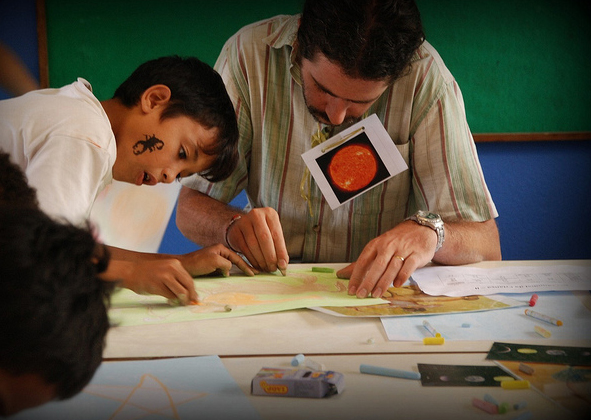"We should get rid of the words 'curriculum delivery,'" he said, referring to the multitudes of tech platforms. "It's an art form to teach, the judgement of what might work today may not work tomorrow."
Teachers are the connective tissue in helping kids find not just subjects at which they test well, but what they're passionate about, he said. "You often don't know what you're passionate about because you haven't been introduced to it in the right way," he said. "Teachers provide that stewardship we need," he said.
For teachers, helping kids find their passion outside the confines of standardized curriculum and testing can be a messy endeavor, but worth the challenge. Marc Prensky, author of the book BRAIN GAIN: Technology and the Quest for Digital Wisdom, added that, rather than finding different ways for everyone to do the same curriculum, we need to find a way to allow individual students to create their own pathways to learning.
Though technology could help in this realm, the value that great teachers bring to the equation is immeasurable against what software can do, Prensky said: providing empathy and helping students find their passion by providing a wider place to look.
"Helping students find their passion will lead them to achievement," he said.
Ever the pithy presenter, Prensky proposed to the audience four ways teachers can do this.
- LISTEN. It's impossible to encourage students when we don't know what their passions are, so above all, teachers must listen to their students. "Or else what we get is 'cellophane kids,' when a teacher looks right through them to the curriculum and test scores and kids become invisible," he said.
- RESPECT. Adults and kids don't respect each other as much as they should, Prensky said. "The war between digital natives and immigrants is over, and the natives have won! So let's move forward to mutual respect and wisdom," he said. We need both technology and strong pedagogy, but we need to include kids' voices in how we make decisions about learning. "All education decisions come top down right now," he said. "The next century is about changing that."
- OVER-EXPECT FROM STUDENTS. Today's kids have far greater capabilities than ever been before, not less. "What's making them better is connecting their brains to technology wisely," he said. Let's step up our expectations of them in that regard.
- DO WHAT YOU KNOW IS RIGHT. "Teachers know what kids need, but someone has convinced them to just cover the curriculum," he said. A teacher's job is to help equip kids with skills to function and thrive in the digital future, and though that could be challenging because of conflicting policies in place, that's the definition of courage.


